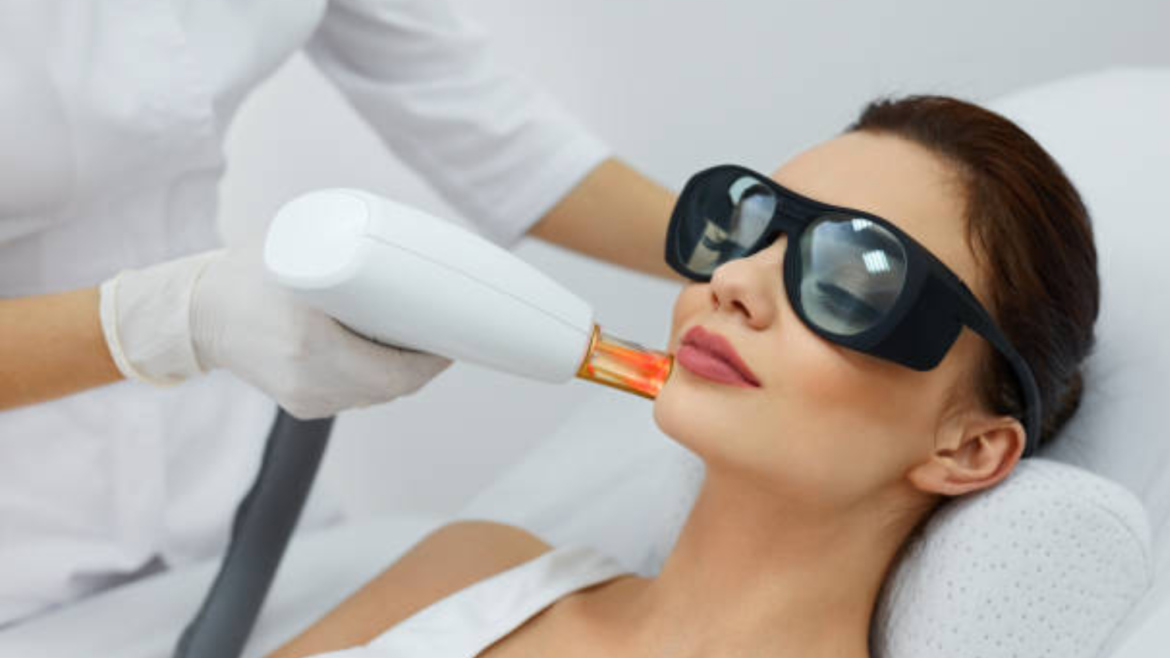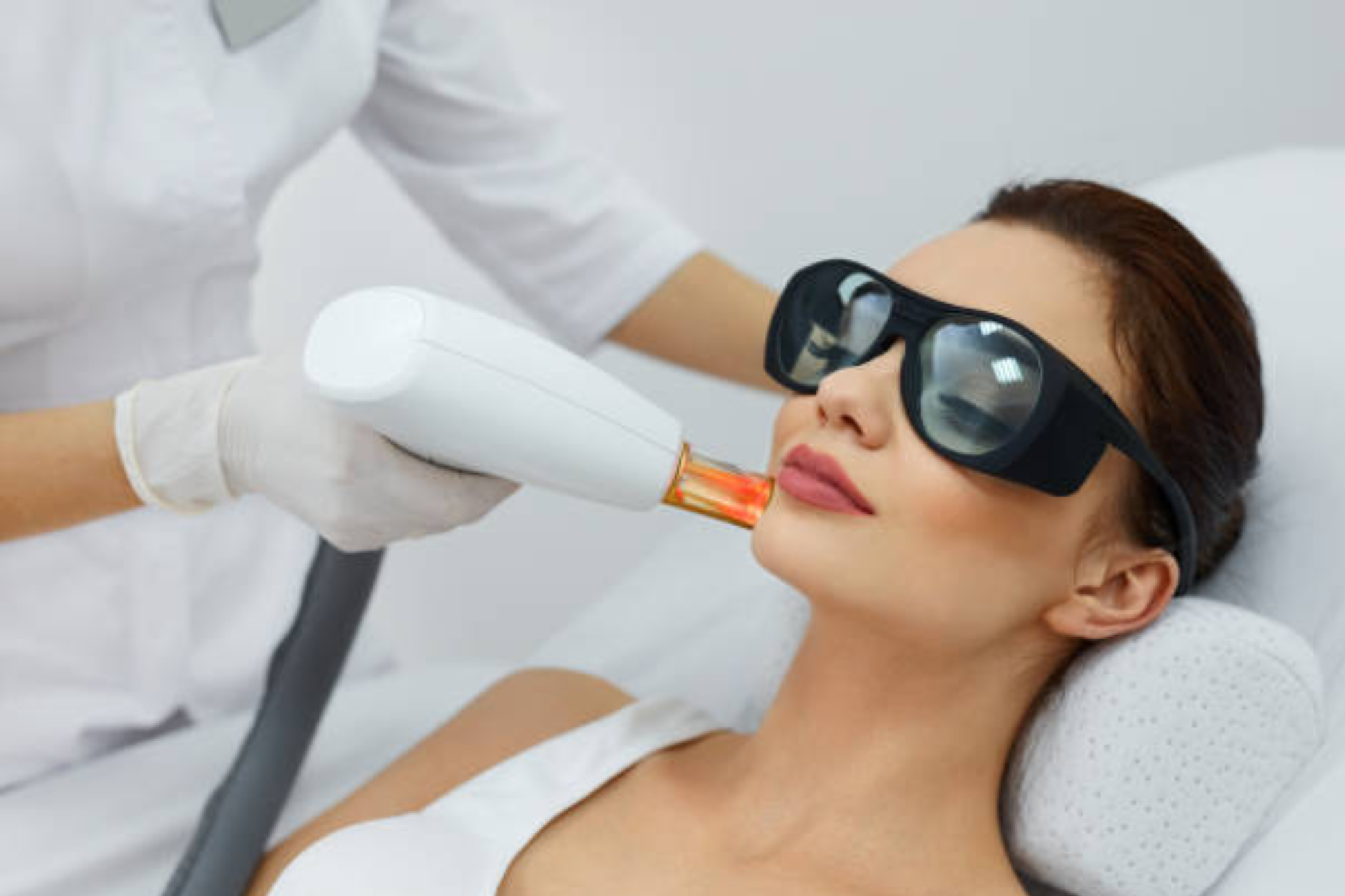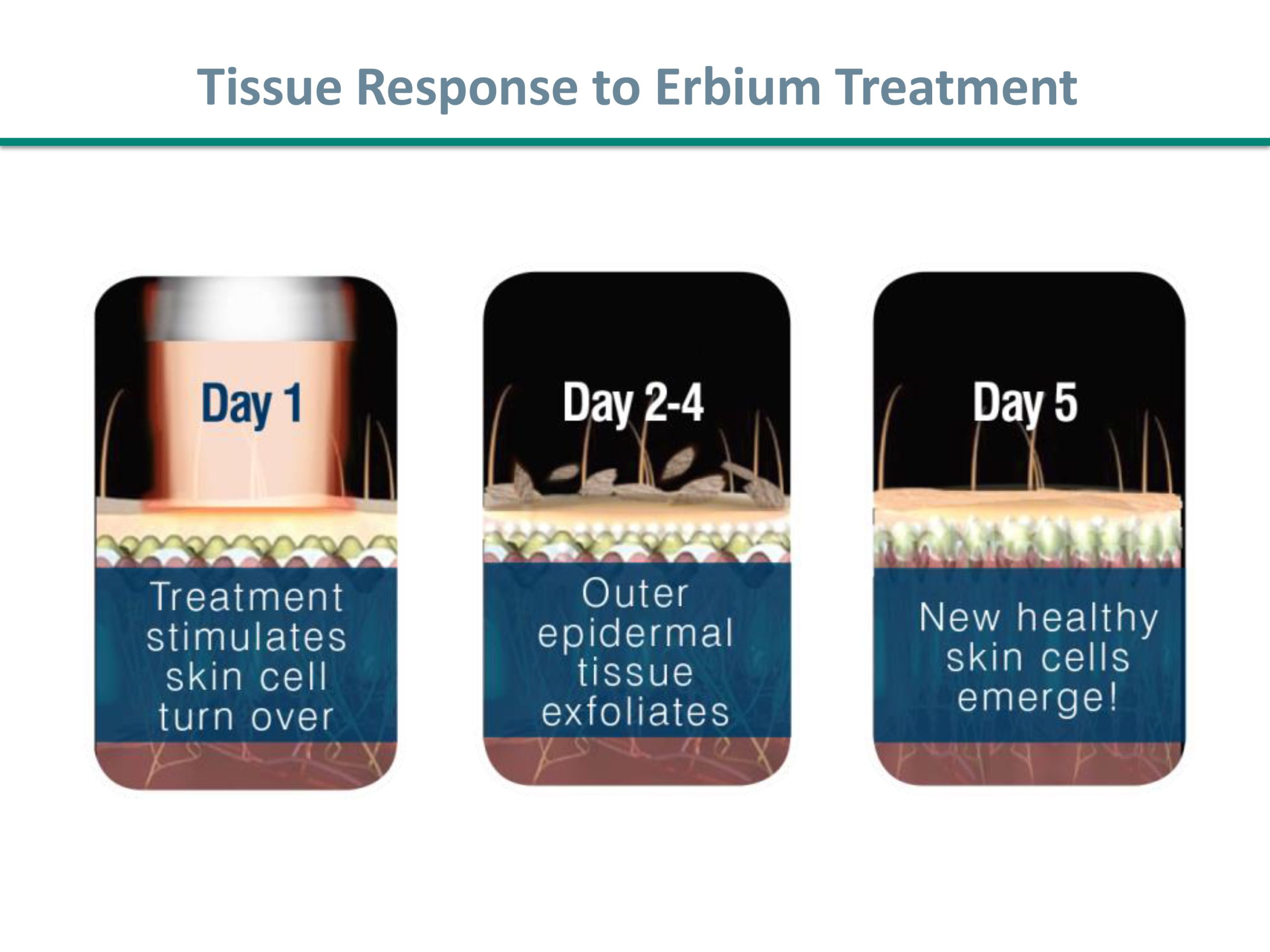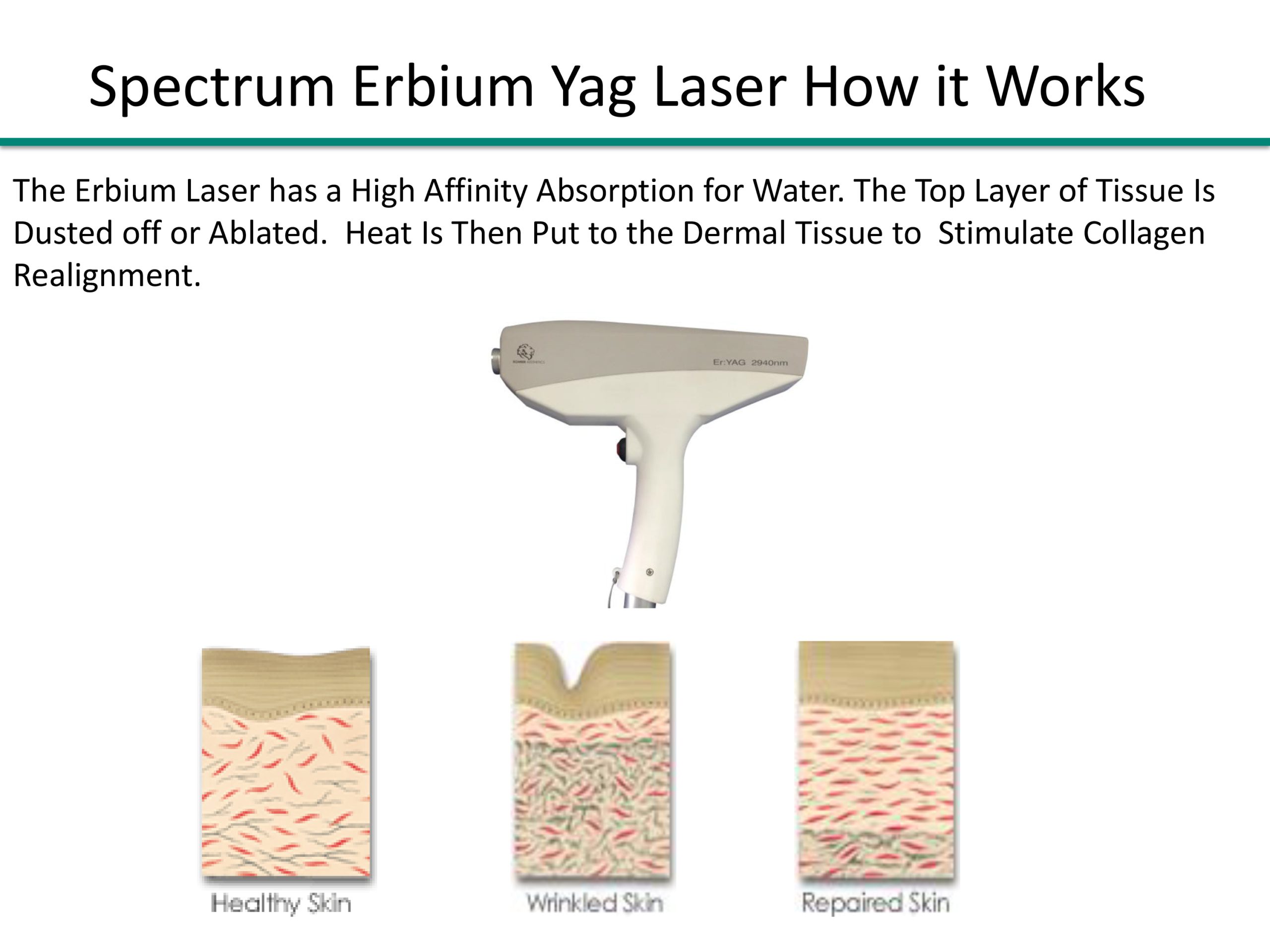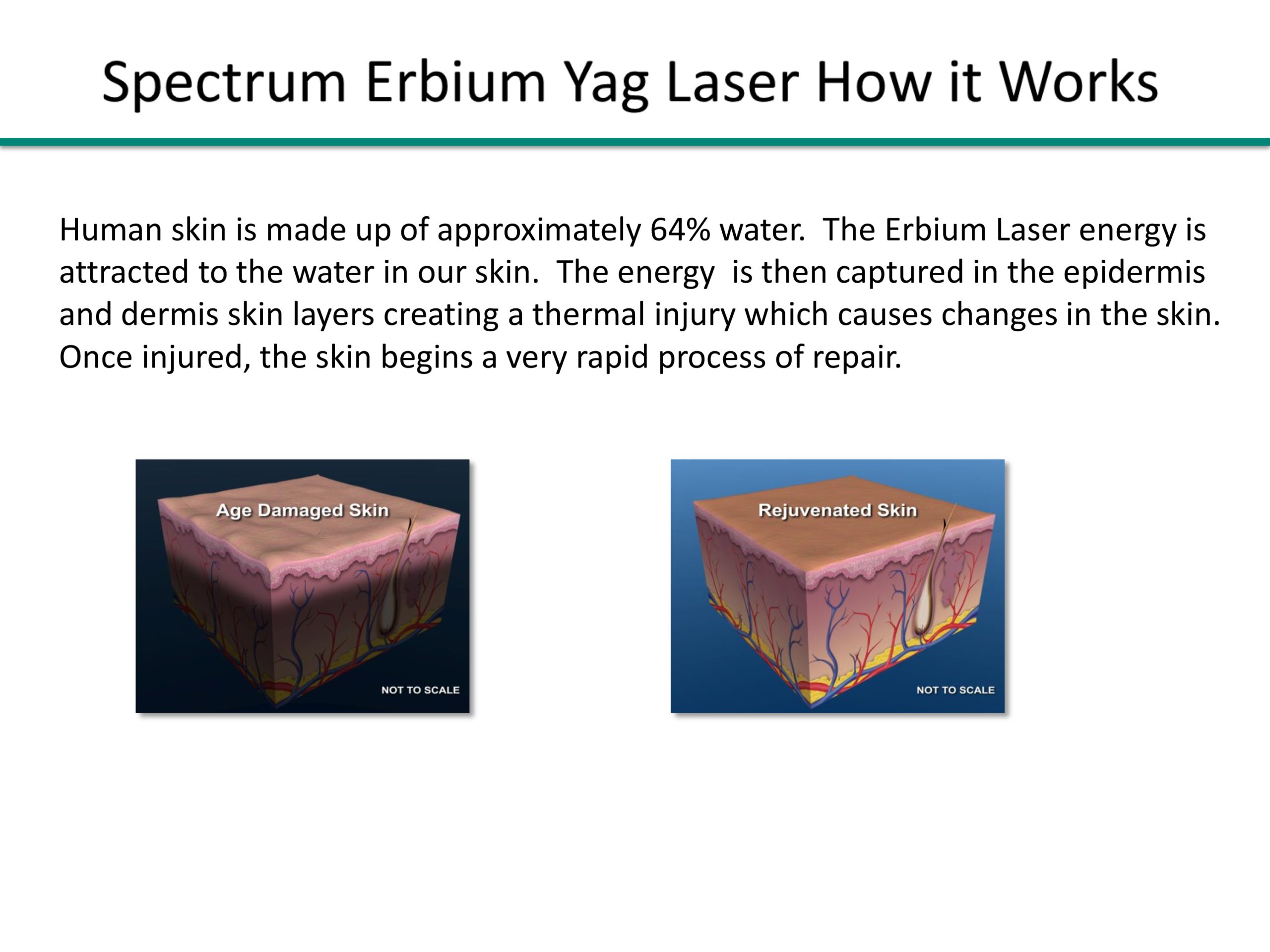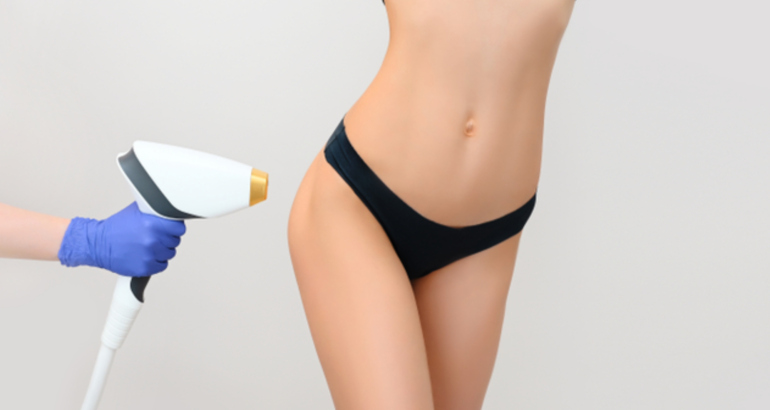CO2 Laser and Erbium Yag Laser Skin Resurfacing
What is skin resurfacing?
Skin resurfacing is a cosmetic procedure that aims to improve the texture, tone, and appearance of the skin by removing the outermost layer of damaged skin. It can be used to address various skin concerns such as wrinkles, fine lines, scars, age spots, and uneven pigmentation. There are several skin resurfacing methods, and the treatment choice depends on the individual’s skin condition and desired results. Some typical treatments for skin resurfacing include:
- Chemical Peels: Chemical peels involve applying a chemical solution to the skin, which causes the outer layer to peel off. The depth of the peel can vary based on the strength of the chemical used, and it can be superficial, medium, or deep. Superficial peels require little downtime, while deep peels may need more extensive recovery.
- Microdermabrasion: This non-invasive procedure uses a device with tiny crystals or a diamond-tipped wand to exfoliate the skin gently. It helps remove the top layer of dead skin cells and stimulates collagen production, resulting in smoother skin.
- Hydrodermabrasion: Similar to microdermabrasion but more aggressive, dermabrasion uses a rotating device to remove the outer layer of skin. It is typically used for more severe skin issues and may require a longer recovery.
- Intense Pulsed Light Resurfacing: IPL laser skin resurfacing, also known as IPL photorejuvenation, is a non-ablative cosmetic treatment that uses broad-spectrum light pulses to improve the appearance of the skin. Unlike ablative laser resurfacing, which removes the skin’s outer layers, IPL delivers scattered wavelengths of light to target specific skin concerns without damaging the surface.
- Radiofrequency (RF) Microneedling: RF microneedling combines microneedling with radiofrequency energy to stimulate collagen production and improve skin texture. It is effective for mild to moderate skin concerns.
- Erbium Yag Laser Resurfacing: This procedure uses high-energy laser beams to remove the outer layer of skin. It can be ablative, meaning it removes the entire outer layer, or non-ablative, where it targets specific areas without removing the whole surface. Ablative laser resurfacing provides more dramatic results but requires more downtime and recovery.
- CO2 Laser Resurfacing: A specific type of ablative laser resurfacing that uses carbon dioxide lasers to remove damaged skin and stimulate collagen production. It is effective for significant skin rejuvenation but requires extended recovery.
- Microneedling: Microneedling, also known as collagen induction therapy, is a minimally invasive cosmetic procedure used to improve the appearance of the skin. It involves using a motorized microneedling pen with tiny needles to create controlled micro-injuries on the skin’s surface.
- Microneedling PRP (2-step) Skin Resurfacing: This technique uses a microneedling pen and plasma energy to create controlled micro-injuries in the skin, stimulating collagen production and improving skin texture.
It’s essential to consult with a qualified dermatologist or cosmetic surgeon to determine the most suitable skin resurfacing treatment based on your skin type, concerns, and desired outcomes. They can evaluate your skin condition and recommend the best approach for achieving your goals while considering potential risks and recovery time.
Below are the summary and depth for all skin resurfacing treatments:
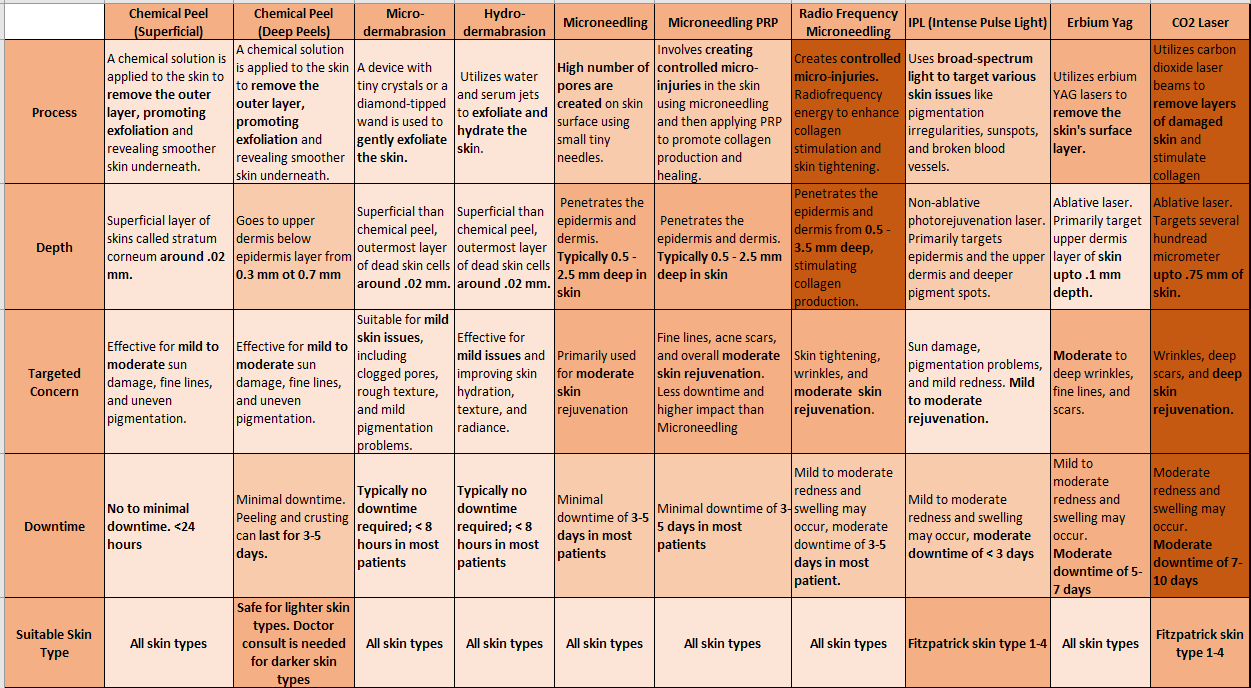
CO2 and Erbium Yag lasers are ablative laser skin resurfacing, which is used to remove the top layer of skin in a controlled manner, leading to moderate to deep skin rejuvenation.
Co2 laser skin resurfacing
We use the FDA-approved Phoenix laser machine from Rohrer Aesthetic for performing the CO2 laser treatment.
Indications for Fractionated CO2 Laser Systems
- Sun-damaged skin
- Aging skin
- Skin Texture irregularities, warts, and skin tag removals
- Pigmented dyschromias & scars
- Skin striations
- Early Rhytids
- Wrinkles
- Ablation and resurfacing of soft tissue
Reducing Fine Lines and Coarse Wrinkles
Getting Rid of Coarse Wrinkles and Fine Lines
The CO2 laser beam is divided into tiny shafts by a scanner in the Phoenix-15 CO2 laser. Light shafts pass through the epidermis and heat the skin’s subcutaneous layers. This heat stimulates collagen production by causing skin cells to replicate more quickly in order to repair the wound. The treatment area of the scanner can be adjusted from 5 to 30 millimeters.
Laser Blepharoplasty
The Phoenix-15 CO2 laser has an incisional handpiece that acts as a scalpel-like cutting tool.
As the laser energy cuts, it vaporizes and coagulates, resulting in less bleeding, bruising, and swelling, minimum or no discomfort and a quicker recovery time.
Removal of Warts
Warts are one of a number of unattractive and uncomfortable soft tissue disorders. Because it removes the wart’s head and root, the Phoenix-15 CO2 laser is an excellent treatment for eradicating warts. The laser produces a high-intensity beam that vaporizes the wart and coagulates its blood flow while inflicting no injury to the surrounding tissue.
Removal of Skin Tags
Skin tags are tiny flaps of skin that protrude from the neck, armpit, groin, and eyelids, among other places. Skin tags are benign growth that comes in various sizes and shapes. They may also be flesh-colored or incorporate darker colors. The Phoenix-15 CO2 Laser can remove skin tags swiftly and effectively with minimal bleeding and no downtime.
How Fractional Technology Works
The light emitted by the Phoenix CO2 laser has a wavelength of 10,600nm, which is substantially absorbed by water down to the lower dermis.
- Each CO2 energy pulse ablates a vaporized tissue column.
- The laser energy is spread even, leaving small regions of untreated skin in between places when ablation occurs, stimulating collagen development and remodeling. This speeds up the healing process and cuts down on patient downtime.
Spot Size and Depth of Ablation
CO2 Fractional
Spot Size = 120 microns
Phoenix CO2 Laser Resurfacing Depth: ~ 100 – 750 μm
Treatment approach:
- Remove all make-up and visible hairs from the area to be treated
- Examine the treatment area carefully for any evidence of cancer
- Continue only if you are sure there are no signs
- Both the operator and the patient must wear protective eyewear
- Apply topical anesthetic and wait (45-60 minutes)
- Thoroughly remove topical anesthetic
Instructions for Aftercare
Day 1 (1st day after treatment):
- Sunburned look with tight feeling
- Avoid direct sunlight and excessive heat
- Begin washing face as needed with tepid water and gentle cleanser on day 1 (1st day after treatment) (use your hands only)
- Reapply ointment/cream to the afflicted area as needed after taking a tepid shower and washing your hair (ensure skin remains constantly moist)
Day 2:
- Swelling should subside, and skin may bronze and feel gritty
- Itching (particularly along the jaw-line) tends to begin on this day
- Continue applying ointment/cream (and cool compresses, if needed)
- Continue washing face with a gentle cleanser and tepid water
- For extreme itching, hydrocortisone cream (OTC 1%) may be applied
- AVOID picking and/or scratching
Day 7-28
- Continue appropriate moisturizer until the skin has hydrated back to its normal level (3-4 weeks)
- May start regular skin care program as long as the treated area is healed (no exfoliation)
- Continue applying non-irritating sunblock (SPF 30+) and use mineral make-up (powder) to protect treated areas (Do not use liquid foundation as it may clog pores and irritate new skin)
- Avoid excessive sun exposure for up to 4 weeks (cover treated areas with a hat or coat)
- Resume workout routines
Healing times will vary depending on the individual and the therapy intensity.
Complications
Laser skin resurfacing complications include:
- Hypopigmentation
- Scarring (usually resolves over time with steroid treatment)
- Induration (typically resolves over time with steroid treatment)
- Induration that generally resolves over time with steroid treatment
- The formation of fibrotic tissue, which usually disappears with steroid therapy over time.
- Necrosis of the preauricular flap
- Auricular skin slough/loss
Prognosis and Outcome
The results range from good to exceptional, depending on the indication for which laser resurfacing was conducted. Patient satisfaction depends on the delivery of natural-looking results with minimum downtime and a low complication rate. The most significant improvement is in actinic changes. Wrinkles are frequently reduced by 60-80%, while scars are reduced to a lesser extent.
Deeper skin folds of the cheeks, forehead, and neck, malar bags and excess skin of the upper eyelid (pseudo blepharoplasty effect), show improvement, but the results are less predictable.
Static lines are enhanced more than lines that are dynamic. The use of botulinum toxin A to treat these dynamic lines results in a significant improvement.
Heat stimulates the skin’s subcutaneous layer.
The use of botulinum toxin A to treat these dynamic lines results in a significant improvement.
Throughout 60 to 90 days, heat induces the regeneration of subdermal collagen. At 3–6 months, patients should be reviewed and/or retreated.
Typical Fractional CO2 Healing Process
Pretreatment

CO2 laser skin resurfacing before and after for face


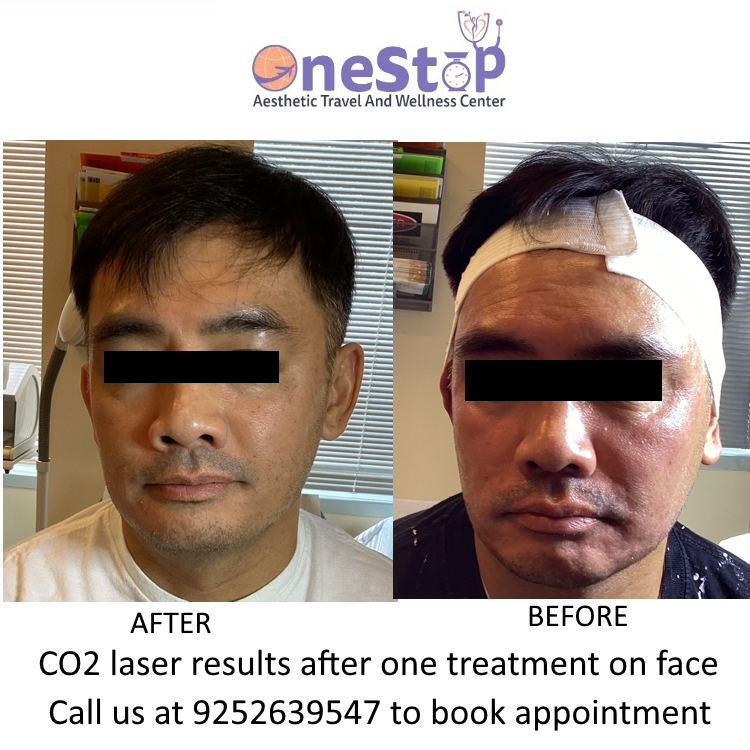
CO2 laser skin resurfacing before and after for hands
CO2 laser skin resurfacing before and after for lips and chin

CO2 laser skin resurfacing before and after around eyes

Erbium Yag Laser skin resurfacing
We use the FDA-approved Spectrum laser from Rohrer Aesthetics for Erbium Yag laser skin resurfacing. This laser treatment can be performed on all skin types.
The erbium YAG laser is less invasive in treating superficial wrinkles and fine lines. The procedure has a short recovery period and produces excellent outcomes for mild to severe skin wrinkling and dyschromia. The treatment is light and risk-free and can be used on the neck, chest, hands, and face.
Pre-treatment instructions for Erbium Yag laser:
Before starting treatment, discuss any healing issues you have, such as diabetes, connective tissue disease, or radiation/chemotherapy.
If you have an active infection or a history of herpes simplex of the lips, mouth, or face, talk about it.
The Erbium Yag treatment should be avoided if the patient is pregnant or breastfeeding.
Discuss and disclose any topical anesthetic, antibiotic, or other pharmaceutical allergies you may have.
Don’t start the treatment if you’ve used Isotretinoin (Accutane) in the last 12 months.
Discuss any hypertrophic scarring, keloid forms, or other skin problems you’ve had in the past.
Before undergoing further therapy:
Tell your doctor about any new medications you’re taking during your therapy. Treatments are not permitted in sunburnt and suntanned areas. Four weeks before treatment, avoid direct sun exposure and tanning beds. Any treatment area exposed to the sun should be protected with a broad-spectrum sunscreen with an SPF of 30 or higher.
Erbium laser before and after for face

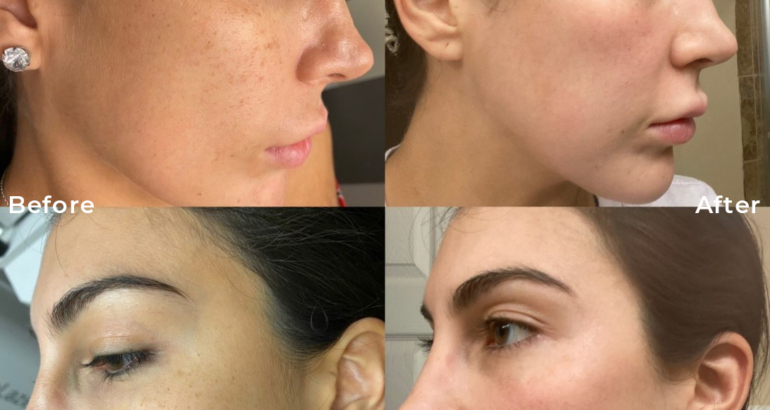

Erbium laser vs co2 laser skin resurfacing
Erbium YAG and CO2 lasers are both ablative lasers used for skin resurfacing, but they have some differences in their application and effects.
Wavelength and Ablation Depth:
- The Erbium YAG laser operates at a wavelength of approximately 2940 nm, which is easily absorbed by water. It is a more superficial ablative laser that specifically targets the epidermis and upper dermis. This makes it particularly helpful for addressing fine lines, wrinkles, and other superficial skin concerns.
- On the other hand, the CO2 laser operates at a wavelength of around 10,600 nm and has a higher water absorption coefficient than the Erbium YAG laser. This laser can penetrate deeper into the skin, reaching the mid to deep dermis. As a result, CO2 lasers are often used for more significant skin resurfacing, such as treating deep wrinkles, scars, and other severe skin conditions.
Treatment Depth and Downtime:
- Erbium YAG lasers cause less downtime than CO2 lasers because they only ablate the upper layer of skin. Recovery time is usually shorter, with a lower risk of complications.
- In contrast, CO2 lasers cause deeper ablation and removal of more tissue, leading to a more extended recovery period lasting several weeks. There is also a higher risk of side effects such as prolonged redness and skin sensitivity.
Skin Concerns Addressed:
- Two types of lasers are commonly used for skin treatments. Erbium YAG lasers are recommended for people with lighter skin tones and those wanting quicker recovery time. They are effective for fine lines, superficial wrinkles, sun damage, and mild to moderate skin laxity.
- On the other hand, CO2 lasers are better for people with significant skin concerns who are willing to accept longer downtime. They are more effective for deeper wrinkles, acne scars, severe sun damage, and advanced signs of aging. While CO2 lasers provide more dramatic results, they may come with higher risks.
What is the cost of laser skin resurfacing?
The CO2 laser is an ablative fractionated laser treatment that needs skin preparation for desired results. We recommend you perform a skin consult with the doctor and then follow the skin preparation as per the doctor’s advice. The cost for CO2 laser skin resurfacing can be found on the book online page.
Erbium Yag is an ablative non-fractionated laser that needs less vigorous skin preparation than CO2 laser. We still recommend you do a skin consult with the doctor and follow a skin prep regime as per the doctor. The cost for the Erbium Yag laser can also be found on our book online page.
What other Medical Spa treatments do you provide?
You can check out Medical Spa services on this page.
Where can I look at the prices and book an appointment online?
You can book an appointment and check our competitive pricing on this page.

